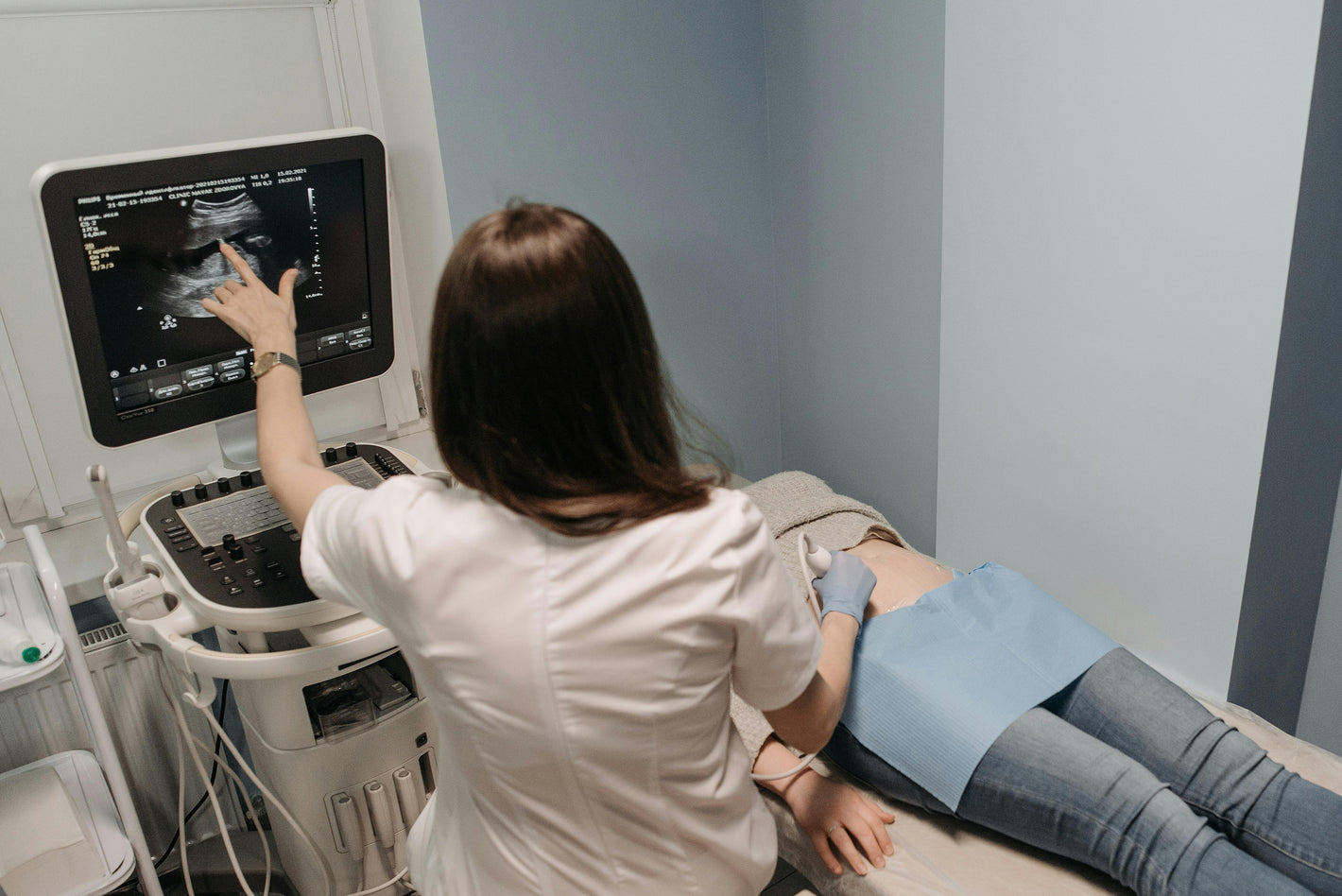Skull Theory Gender: Can It Predict Your Baby's Gender?


Related products
Skull Theory Gender: Can it Predict Your Baby's Gender?
Will it be a boy or a girl? is one of the most exciting questions that arises as soon as you reveal you are pregnant. The gender of a newborn cannot usually be determined by conventional medical scanning until about 20 weeks of pregnancy. However, were you aware of the claims that you can figure out the gender of your unborn child as early as 12 weeks?
Some people are able to obtain this information through elective ultrasound scans, while others choose to wait until the time of birth to discover the baby’s gender. But, for those who cannot wait nor wish to go through a more medical way, there are plenty of old wives’ tales and other practices that promise to tell which gender you are having. One of them is by the way of Something that has been gaining popularity with time is the Skull Theory.
This theory advocates that by the analysis of the baby’s skull through an ultrasound scan, one can be able to tell whether they are expecting a boy or girl. But is it as effective? Is it really possible to tell the gender of your baby by skull theory? Is Skull Theory nothing more than a fun game of guessing and speculation as some would have you believe or is there more to it than meets the eye? The following article is devoted to the detailed investigation of Skull Theory. It explains what it is, why and how it came about, what science is behind it if any, and whether the theory has any validity when it comes to predicting the gender of your baby.
What is Skull Theory?
The foundation of skull theory is the idea that, even during foetal development, the skulls of men and women differ significantly. The theory derives from the discipline of anthropology, where the examination of human skeletal remains has shown significant variations between male and female skulls. Skull theory supporters extend this idea to ultrasound pictures of growing infants and propose that, as early as the 12-week scan, the gender of the child can be predicted from the form of the skull.
In skull theory, the two aspects that are considered are:
- The forehead formation: In accordance with the theory, boys have an epicanthic-folding sloping forehead, and girls have a straight standing round forehead on average.
- The blockings of the jaw and the chin: it has been argued that males have squarish more angular jaw line compared to females while most females are believed to have rounder softer chins.
The History of Skull Theory
The subject of anthropology is where skull theory first emerged. There, the study of human skeletons specifically, the forms of the skulls help distinguish between the remains of males and females. There are clear variances between the skulls of males and females in adult skeletons. Male skulls often feature squarer chins, broader jawbones, and more noticeable brow ridges. In contrast, female skulls are typically smaller, have smoother outlines, and have fewer noticeable brow ridges. These differences are used by anthropologists to determine gender from skeletal remains.
However, applying these results to foetuses yields far less trustworthy outcomes. Foetal and newborn skulls are still developing, while adult skulls clearly display gender distinctions. As a result, early in life, gender-specific features that may become apparent in adults are far less distinct. Because of this, it is challenging to accurately determine a baby's gender using Skull Theory alone.
How is Skull Theory Applied?
Parents use skull theory typically do so around the time of their 12-week ultrasound scan. At this stage, the baby’s skull is forming, and advocates of skull theory believe that certain features, such as the forehead slope and jawline, can indicate the baby’s gender.
Girl with Skull Theory
There are particular characteristics to look for when using Skull Theory to forecast a girl. The jaw is rounded in appearance, and the chin is often more pointed. The forehead also seems more vertical and the brow ridge is less, giving the face an overall softer aspect.
More pointed chin: It's believed that girls have a chin that is sharper, more defined, and points upward.
Rounded jaw: This type of jawline lacks the angular structure usually associated with guys, and it is smoother and rounder.
Smaller and sharper brow ridge, more vertical forehead: Girls often have a forehead that appears higher and more erect, with a more delicate brow ridge.
Sharp upper margins: The bone structure above the eyes is more noticeable and has sharper lines. One example of this is the frontal bone, which is located above the eye sockets.
Boy with a Skull Theory:
Skull Theory recommends emphasising a more pronounced and angular look when forecasting a boy. Boys are said to have a square jawline, a sloping forehead, and a prominent brow ridge. The features are stronger and more comprehensive overall.
Big brow ridge and sloping forehead: A boy's forehead slopes rearward and his brow ridge is often bigger and less vertical.
Square chin: Boys' chins are usually more squared-off and angular, which helps to define their jawline.
Bigger teeth: A broader jaw shape may be reflected in the somewhat bigger teeth.
Round and dull brow ridge: Boys often have a broader, rounder brow ridge than girls, which tends to be sharper.
The flared or sharply angled gonion: The region where the jaw bends towards the ear is more prominent and sharper in males, giving the lower face a distinct, angular appearance.
Skull Theory supporters utilize these features to predict the gender of the infant, however they are purely conjectural and have not been validated by science.
Is Skull Theory's Science True or False?
Although a lot of expecting mothers firmly believe that Skull Theory may accurately predict the gender of their child, there isn't any scientific proof to support this theory. Though it's entertaining to investigate, the theory is still only theoretical. So, to what extent is it accurate?
Development of the Foetal Skull
A foetus is still in its very early stages of development at 12 weeks. Like the rest of the body, the skull is changing and expanding quickly. Although there are some developing skull structures, they are still very much in the early stages. More significantly, male and female skull variations are not visible until much later in life, usually after puberty. Any variations in the skull at this point are probably so slight as to be readily misunderstood. Dr. Kristina Killgrove, a biological anthropologist from the University of West Florida, is cited a lot. She also said that although adult male and female skulls differ clearly from one another, foetuses nonetheless remain in the womb. It is challenging to depend on this strategy since different ethnic groups have diverse skull forms.
She adds further that the human skull grows well into adulthood and is not entirely formed during pregnancy. She points out that adolescence is when the sexually dimorphic characteristics that separate the skulls of men and women begin to show. She said, "You just don't get these sexually dimorphic features of the skulls in males and females until you get to maturity or at least puberty."
Obstetrician and gynaecologist consultant Dr. Shazia Malik concurs. Speaking to The Sun, she stressed that there’s “no substantial scientific proof of Skull Theory being meaningfully true." Put another way, the scientific community doesn't really support skull theory, even if it may seem to work for certain people.
Research Studies in Science
Skull theory is popular on social media and in online forums, although it is not supported by empirical research. As of right now, no peer-reviewed research has verified that the skull theory is a reliable way for predicting gender. Given the lack of significant developmental differences between male and female foetuses in the early stages of pregnancy, medical practitioners often reject the skull theory as inaccurate.
Positioning the Foetus and the Limits of Ultrasound
Interpreting forms and details can be challenging due to the two-dimensional picture that ultrasound scans offer of a three-dimensional object. The fetus's location, the ultrasonography probe's angle, and even the technician's level of expertise can all have an impact on how the skull appears in an image. As a result, what might look like a sloped forehead could simply be a trick of the angle, rather than an indicator of gender.
Furthermore, a review of several gender prediction techniques that was published in The Journal of Reproductive Medicine revealed that the majority of these folk theories including Skull Theory lacked a solid scientific foundation and were not consistently accurate. The most precise method for determining the gender of a baby is still through normal medical procedures like ultrasound scans, which are often performed after 18 to 20 weeks of pregnancy.
Skull Theory is better viewed as an entertaining, speculative game rather than a surefire way to predict the gender of your unborn child, as these real-world instances and research demonstrate, even if some people may find it fascinating or even persuasive.
The accuracy of skull theory
Therefore, how reliable is skull theory for determining a baby's gender? Not surprise, the response is far from correct. Many parents who use the skull idea claim various levels of success. Some people say it accurately predicted the gender of their child, while others discovered it was entirely inaccurate. Actually, there's a 50/50 possibility that the skull idea will be true. That's about it.
Some experts claim that the approach can achieve up to 88% accuracy; this is more successful than the 50% of parents who stated their 20-week scan accurately identified the sex of their child. Realistically speaking, though, the skull idea is a bit dated because there is no scientific evidence to support its veracity and because the distinctions in skulls that are used to identify sex are often only apparent in adult skulls, not in neonatal ones.
Here are some reviews from those who have given it a try:
- Since the head was so rounded in my 13-week scan picture, many people assumed it was a female. I will be giving birth to a newborn boy in six weeks.
- I tried to use Skull Theory thinking it was a girl because my sister's scan looked exactly like that, but it turns out she's having a boy
- The shape of my daughter's head indicated that she was a female in the end. Some kids' skulls are in the centre, so it’s tougher to tell.
- With my second son, the skull idea proved incorrect! It is clearly not very dependable.
- With my son, it was wrong.
Different Approaches to Gender Prediction
Although skull theory may not be a reliable scientific way to anticipate a baby's gender, parents can still try other, more conventional and contemporary approaches. Among these include a few of the following.
Nub theory: According to this hypothesis, the gender of the unborn child may be inferred from the angle of the genital tubercle, or "nub," which is apparent on an ultrasound scan between 12 and 14 weeks. A nub inclined over 30 degrees is considered to forecast a male, whereas a flatter nub is thought to signify a girl.
Chinese Gender Prediction Calendar: This tool predicts the gender of the unborn child by using the mother's age at conception and the month of conception, which is based on an old Chinese technique.
Ramzi Theory: According to this technique, the gender of the unborn child can be determined as early as six weeks by where the placenta is located on the ultrasound scan. A boy is suggested by a placenta on the right side of the uterus, and a girl is suggested by a placenta on the left.
DNA Blood Tests: Non-invasive prenatal testing (NIPT) can reliably identify a baby's gender as early as 10 weeks pregnancy, for those seeking a more scientific method. These tests look for Y chromosomes, which indicate a male foetus, by analysing foetal DNA in the mother's bloodstream.
People Also Ask
Do baby skull shapes vary by means of genetics or do they suggest the gender?
Baby skull shapes vary and are influenced more by genetics and individual development than by gender. Certain theories claim that skull shapes indicate the gender of the foetus, however, scientific studies and evidence does not support these claims.
How does skull theory differ from the nub theory for the prediction of gender?
Skull theory predicts the gender of the foetus by picking identification points from the developing skull. Whereas nub theory focuses on the angle of the genital tubercle, also known as nub, on the early ultrasound scan images. Nub theory is preferred over skull theory as it has higher accuracy than the theories based on a skull that is in its developmental stages.
Conclusion
The gender of a newborn cannot usually be determined by conventional medical scanning until about 20 weeks of pregnancy. Some people are able to obtain this information through elective ultrasound scans, while others choose to wait until the time of birth to discover the baby’s gender. There are plenty of old wives’ tales and other practices that promise to tell which gender you are having. One of them is has been gaining popularity with time, known as the Skull Theory.
The foundation of skull theory is the idea that, even during foetal development, the skulls of men and women differ significantly. The theory derives from the discipline of anthropology, where the examination of human skeletal remains has shown significant variations between male and female skulls. This theory covers two aspects, the forehead formation and the blocking of the jaw and chin.
There are clear variances between the skulls of males and females in adult skeletons. Male skulls often feature squarer chins, broader jawbones, and more noticeable brow ridges. In contrast, female skulls are typically smaller, have smoother outlines, and have fewer noticeable brow ridges. These differences are used by anthropologists to determine gender from skeletal remains. However, applying these results to foetuses yields far less trustworthy outcomes. Foetal and newborn skulls are still developing, while adult skulls clearly display gender distinctions. As a result, early in life, gender-specific features that may become apparent in adults are far less distinct. Because of this, it is challenging to accurately determine a baby's gender using Skull Theory alone.
Parents use skull theory typically do so around the time of their 12-week ultrasound scan. At this stage, the baby’s skull is forming, and advocates of skull theory believe that certain features, such as the forehead slope and jawline, can indicate the baby’s gender.



































 Rated Excellent by 26,523+ Reviews
Rated Excellent by 26,523+ Reviews